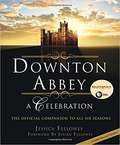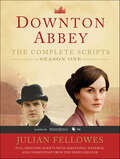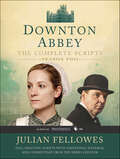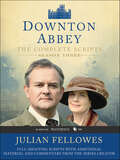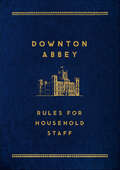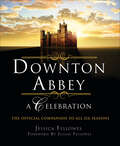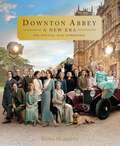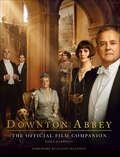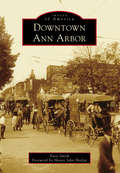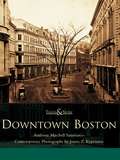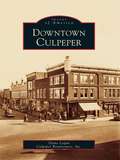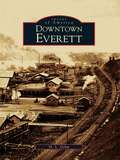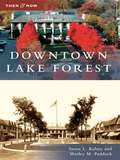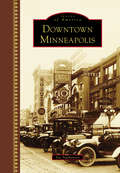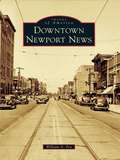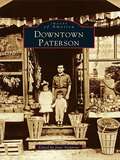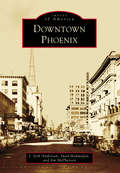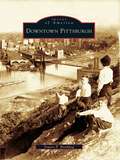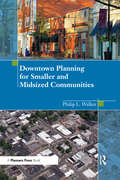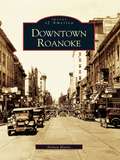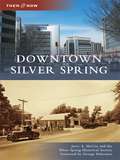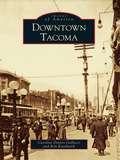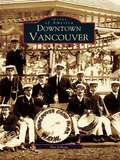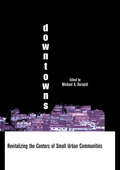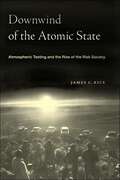- Table View
- List View
Downton Abbey - A Celebration: The Official Companion to All Six Series
by Jessica FellowesSince the moment we first entered Downton Abbey in 1912, we have been swept away by Julian Fellowes' evocative world of romance, intrigue, drama and tradition. Now, in 1925, as Downton Abbey prepares to close its doors for the final time, Jessica Fellowes leads us through the house and estate, reliving the iconic moments of the wonderfully aristocratic Crawley family and their servants as they navigate the emerging modern age. Travelling from Great Hall to servants' hall, bedroom to boot room, we glimpse as we go Matthew and Isobel Crawley arriving for the first time, the death of Kemal Pamuk, Cora's tragic miscarriage, Edith's affair with Michael Gregson, Mary's new haircut, Thomas and O'Brien's scheming, Anna and Bates's troubles with the law, and Carson's marriage to Mrs Hughes.Alongside this will be in-depth interviews with the cast who have worked on the show for six years and know it so well. Packed full of stunning location shots and stills from all six series of the show including exclusive behind-the-scenes photography, this celebratory book is the ultimate gift for Downton Abbey fans the world over.
Downton Abbey Script Book Season 1: The Complete Scripts (Downton Abbey Ser. #1)
by Julian FellowesFull shooting scripts with commentary from creator Julian Fellowes highlighting key historical and dramatic details. Includes previously unseen material. The most successful British television drama of our time, the multi-award-winning Downton Abbey has become a national phenomenon in the U.S. as well. Created by Julian Fellowes—who received an Academy Award for his screenplay for the acclaimed Robert Altman motion picture, Gosford Park—Downton Abbey features stellar performances, ravishing sets and costumes, and, most importantly, absolutely riveting plots. Now the scripts for the entire first season have been collected in one volume, along with never before seen material, incisive commentary, and color photos that will completely immerse fans in the world of Downton Abbey.Praise for Downton Abbey“A deft balance of emotion, suspense and comedy.” —Daily Telegraph“The sets and costumes are ravishing, the attention to detail painstaking and the performances are brilliant. But above all, it’s a cracking story.” —The Times (London)\“There is no mystery about the potency of this series, slathered in wit, powered by storytelling of a high order.” —The Wall Street Journal“A sumptuous, accomplished piece of television.” —The Guardian (UK)
Downton Abbey Script Book Season 2: The Complete Scripts (Downton Abbey Ser. #2)
by Julian FellowesThe full scripts of award-winning Downton Abbey, season two including previously unseen commentary from Julian FellowesOpening in 1916, as the First World War rages across Europe, Season Two is the next dramatic installment of the much-loved, award-winning drama. The Crawley family and their servants play their parts on the front line and back at home as their lives are intensified by the strains of war.The shooting scripts give a fascinating view of how Julian Fellowes weaves his storylines of love, loss, and betrayal to captivate the audience. With key insights into the research and creative processes, this will appeal to fans and students alike.
Downton Abbey Script Book Season 3: The Complete Scripts (Downton Abbey Ser. #3)
by Julian FellowesEngross yourself in Julian Fellowes’ multi-award winning drama with the full script of Season Three, which includes previously unseen dialogue and drama as well as two 8-page color photo inserts.Downton Abbey fever is stronger than ever!The most successful British drama of our time continues to captivate viewers with its riveting storylines, stunning costumes, and unforgettable performances by its cast. With Downton Abbey’s script from Season Three—which was the most dramatic yet—fans can go behind-the-scenes to learn all of the secrets.Offering readers the opportunity to read the work in more detail and study the characters, pace and themes in depth, the scripts include an introduction, exclusive commentary, full color photos, and additional material from Julian Fellowes. Readers will be given invaluable insight into how Fellowes researched and crafted the amazing world of Downton Abbey.A must for lovers of Downtown Abbey, the scripts will enhance viewers’ experience with the award-winning show that continues to enchant its audience.
Downton Abbey: Rules for Household Staff
by Justyn BarnesInspired by the Emmy Award-winning television series--and now feature film--Downton Abbey: Rules for Household Staff is a grand gift book for fans that reveals the proper etiquette and techniques required for those working in the manor or on the grounds of the Grantham estate.The household staff of Downton Abbey carries out their duties with effortless dignity, finesse and pride. Yet how do they know how exactly to lay the table, when to leave the room to give Lord and Lady Grantham their privacy, how to care for Lady Mary's furs and which uniform to wear when? This recently recovered and fascinating staff handbook answers all of these questions and more. Covering all the main positions of the Downton household—footman, lady's maid, housekeeper, groundsman and more—and with a general introduction for new members of staff from Carson the Butler, this book tells you everything you need to know about working below stairs in the grand estate of Downton Abbey.
Downton Abbey: The Official Companion to All Six Seasons (The World of Downton Abbey)
by Jessica FellowesThis essential companion to the acclaimed series offers an in-depth, behind-the-scenes look at its unforgettable characters, opulent settings, and more.When Downton Abbey first opened its doors, fans were immediately swept away by Julian Fellowes’s evocative world of romance, intrigue, drama, and tradition. As the show entered its sixth and final season, Jessica Fellowes delivered the ultimate series companion. In Downton Abby: A Celebration, she leads us through the house and estate, reliving the iconic moments of the aristocratic Crawley family and their servants as they navigate the emerging modern age.Travelling from Great Hall to servants’ hall, bedroom to boot room, we glimpse as we go Matthew and Isobel Crawley arriving for the first time, the death of Kemal Pamuk, Cora’s tragic miscarriage, Edith’s affair with Michael Gregson, Mary’s new haircut, Thomas and O’Brien’s scheming, Anna and Bates’s troubles with the law, and Carson’s marriage to Mrs. Hughes.Alongside are in-depth interviews with the cast, as well as a complete episode guide for the first five seasons and a teaser for the sixth. Packed full of stunning location shots and stills from all six seasons of the show including exclusive behind-the-scenes photography, this celebratory book is essential reading for Downton Abbey fans the world over.
Downton Abbey: The Official Film Companion
by Emma MarriottThe worldwide phenomenon and multi-award winning Downton Abbey returns to the big screen with a movie sequel starring the Crawley family and their household staff—and the Downton Abbey: A New Era: The Official Film Companion is the Downton fan&’s front-row ticket to all the behind-the-scenes action. In addition to the original principal cast—including Dame Maggie Smith as the Dowager Countess, Michelle Dockery as Lady Mary, and Hugh Bonneville and Elizabeth McGovern as Lord and Lady Grantham—fans will gain an unprecedented look at the new Downton characters, including those played by new cast members Hugh Dancy, Laura Haddock, Nathalie Baye, and Dominic West. Featuring spectacular photographs from the production, interviews with the cast and crew, and insight from Downton Abbey writer and creator Julian Fellowes, Downton Abbey: A New Era: The Official Film Companion gives fans an in-depth experience of the magic and elegance of Downton Abbey.
Downton Abbey: The Official Film Companion
by Emma MarriottThe official companion to Downton Abbey, the full-length feature film, featuring cast and crew interviews, photos, costume illustrations & more.Downton Abbey: The Official Film Companion is a stunning memento, bringing the world and the characters of our favorite fictional country house to life. Featuring spectacular photographs from the production, interviews with the cast and crew, and a look into the historical and geographical backdrop of the film, this official guide to the Downton Abbey film is made to be treasured and loved by fans across the globe.The film revolves around the King and Queen making an official visit to Downton in 1927, and not only sees the return of all the main cast from the final television series, but also introduces some great British actors to the world of Downton, as we meet the royal family and their retinue. The accompanying book is lavishly illustrated with stunning shots from both behind and in front of the camera, which capture some wonderful off-guard moments during filming, as well as the original costume illustrations.With a foreword from Downton Abbey creator Julian Fellowes.
Downtown Ann Arbor
by Patti Smith Mayor John HieftjeIn 1824, John Allen and Elisha Rumsey established the first homestead in what is now downtown Ann Arbor. The story goes that the community got its name when the two founders' wives, both named Ann, were seen lounging in a grove of trees. In reality, Ann Allen and Mary Ann Rumsey were never in town at the same time, but how it actually was named is unimportant when considering what Ann Arbor grew into. Early settlers gave the town schools, an expansive courthouse, a beautiful post office, and streetcar lines that spanned downtown. They built this town, and their legacy is present in every walk up Huron Street, drive down to William and Main Streets, or bike ride over to Kerrytown.
Downtown Boston
by Anthony Mitchell Sammarco James Z. KyprianosSettled in 1630 by English Puritans seeking religious freedom, Boston has always been a city prone to significant and monumental change. Even before it was incorporated as Boston, named after the town of Boston in Lincolnshire, England, the town's name was changed from Shawmut. From that time, Boston has evolved from being the original center of town government at the Old State House to becoming the financial center of New England in the twentieth century.Downtown Boston captures many of Boston's intriguing changes with photographs of the past and present. Since the advent of photography one hundred and fifty years ago, Boston has seen many topographical changes, such as the infilling that created new land in the Dock Square and Long Wharf areas and the rebuilding of the Financial District with magnificent structures that have become a representation of Boston's banking and investment endeavors. At the height of commercial success, the Great Boston Fire of 1872 brought mass devastation-forty acres of the business area were destroyed and downtown Boston had to be rebuilt. Downtown Boston magnificently portrays Boston's rebuilding and rise as a historically beautiful city.
Downtown Culpeper
by Inc. Culpeper Renaissance Diane LoganIn 1749, George Washington, age 17, was commissioned to survey and plot the town and county of Culpeper. He recorded that the town occupied a "high and pleasant situation." Incorporated in 1834, Culpeper prospered as a major trading and shipping point with the opening of a stagecoach route. The arrival of the railroad in 1853 spurred even more economic development and made Culpeper a strategic supply station for Confederate and Union troops. Occupied by both armies throughout the war, the Culpeper area witnessed more than 100 battles and skirmishes and received many Confederate and Union generals. Military headquarters were established here, with officers lodged in hotels and dining and entertaining downtown. Much of downtown Culpeper was built following the Civil War. The architectural character today reflects the 1888 building boom of High Victorian and Italianate styles.
Downtown Everett
by M. L. DehmSituated on a deep-water bay, Everett's timber-covered peninsula was irresistible to early investors. Natural resources were abundant, and it was whispered that the Great Northern Railroad would soon make this hidden treasure its final destination. Hopes were high and money began to exchange hands. But the Panic of 1893 was right around the corner. Everett never would achieve the "big city" grandeur that Eastern speculators had originally predicted. Nevertheless, the sturdy city by Port Gardner Bay withstood financial panic, depressions, and riots to become the proud seat of Snohomish County. Once heralded as the "Pittsburgh of the West" and the "City of Smokestacks," Everett remains a dynamic city of industry.
Downtown Lake Forest (Then and Now)
by Shirley M. Paddock Susan L. KelseyLake Forest is a picturesque city built on the shores of Lake Michigan and has been home to Chicago's capitalist families, who developed estates around beautiful Lake Forest College. For over 150 years, the Lake Forest Central Business District has been the heart of the community.
Downtown Minneapolis (Images of America)
by Iric NathansonDowntown Minneapolis evolved from a collection of modest frame buildings on the banks of the Mississippi River to the high-rise center of a modern American metropolis. With a burgeoning milling industry powering the local economy, the early frame structures soon gave way to substantial brick and masonry buildings, lining the streets of a bustling 19th-century commercial district. Downtown continued to prosper during the early years of the 20th century, aided by advances in transportation and communications. The heart of the city held its own during the Great Depression and World War II, but the postwar era brought new challenges as a suburban boom threatened the city's economic foundation. Enterprising local leaders responded with innovative developments to meet these challenges, and a reinvigorated downtown took on a new role as the site of a dynamic new residential community, now home to nearly 40,000 city residents.
Downtown Newport News (Images of America)
by William A. FoxSettled in 1621, Newport News has the oldest English place name of any city in the New World. Its name is said to have come from "Newport's news" that supply ships were coming to save the starving Jamestown colonists in 1610. Farming and fishing were the primary occupations until Collis P. Huntington chose Newport News for the eastern terminus of the Chesapeake and Ohio Railway in the 1870s. In 1886, he founded the Newport News Shipbuilding and Dry Dock Company, which has built some of the most famous ships in history. By 1900, a vital city had grown where there were previously only farms and forest. Through vivid images, maps, and reminiscences, Images of America: Downtown Newport News tells the story of the city's once popular and thriving downtown commercial, social, and entertainment area, which met its end from flight to the suburbs after World War II.
Downtown Paterson
by June AvignoneIt was a corporate experiment--an experiment that would later be known as Paterson, New Jersey. Home of the Great Falls, Paterson holds the distinction of being the first planned industrial center of the United States. The land of the Lenape and a few Dutch settlers would be forever changed when politicians and wealthy investors founded Paterson as a corporation, as opposed to chartering it as a city, in 1792. At a crucial turning point in our young, agrarian-based nation, the struggles and triumphs of individuals from diverse ethnic groups would be set into historic motion. Over 100 photographs of Paterson's rich past and complicated present have been woven together with text from noted historians and poets, focusing on the downtown historic area. Downtown Paterson takes us on a journey from the beginnings of the proverbial SilkCity through its radical labor past and days of pre-mall grandeur with a thriving Main Street abundant with elegant stores, vaudeville houses, and movie theaters. This volume ends with a probing look at the city's present-day people and places.
Downtown Phoenix
by Jim Mcpherson J. Seth Anderson Suad MahmuljinOn a bed of a primordial ocean floor and in a valley surrounded by jagged mountains, a city was founded atop the ruins of a vanished civilization. In 1867, former Confederate soldier Jack Swilling saw the remains of an ancient canal system and the potential for the area to blossom into a thriving agricultural center. Pioneers moved into the settlement searching for new opportunities, and on October 20, 1870, residents living in adobe structures that lined dirt streets adopted the name Phoenix, expressing the optimism of the frontier. For decades, downtown Phoenix was a dense urban core, the hub of agricultural fields, mining settlements, and military posts. Unfortunately, suburban sprawl and other social factors of the post-World War II era led to the center's decline. With time, things changed, and now downtown Phoenix is uniquely positioned to rise again as a prominent 21st-century American city.
Downtown Pittsburgh
by Stuart P. BoehmigDowntown Pittsburgh is a 300-acre triangle of land where the Allegheny and Monongahela Rivers converge to form the mighty Ohio River. Between the rivers is a tiny spit of flat-bottom land once known as the gateway to the West, the portal to a vast, remote, unexplored wilderness. Ownership of this strategic wedge of land was fiercely contested for hundredsof years. The powerful Iroquois Nation first invaded the area in the 1600s during the Beaver Wars. When the French planted their flag in 1749, they collided with the British Empire for control of the forks of the Ohio River and all of North America. One hundred years later, this swath of frontier wilderness became the "workplace of the world," the heart of the great Industrial Revolution. Immigrants arrived from around Europe to work in the glass, iron, and steel mills. Industrial giants such as Carnegie, Frick, Mellon, and Heinz forged their fortunes here.Downtown Pittsburgh is the story of the great transformation of this city and its contributions to the world.
Downtown Planning for Smaller and Midsized Communities
by Philip Walker"For so long we were floundering and taking ad hoc measures, but the minute I understood what a downtown plan really was I said 'We need one of those!' As it turned out, it was the most fantastic vehicle I've ever seen," said Susan Moffat-Thomas of New Bern, North Carolina. Her hometown got a much-needed shot in the arm from a good downtown plan. Does yours need a similar boost? The Author, an experienced downtown-planning consultant, offers practical tips for preserving a sense of place, improving fiscal efficiency, and enhancing quality of life in Downtown Planning for Smaller and Midsized Communities. Planners and revitalization officials will learn how to address physical components of the downtown, as well as economic development. The Author, an experienced downtown-planning consultant, also explains how to develop an organization to implement a downtown plan; how federal, state, and local policies may influence the planning process; and how to fund a downtown revitalization effort.
Downtown Roanoke
by Nelson HarrisDowntown Roanoke celebrates the vibrant history of a community that lies at the heart of the scenic Roanoke Valley. From the saloons and livery stables of the late 19th century to the flagship department stores that attracted hundreds of shoppers in the late 1950s, Roanoke has experienced dramatic change. Over 200 archival images have been compiled to produce a stunning collage of the downtown area over the past century. Included are the American Theater, the Rialto, the Jefferson, and the time-altered streetscapes of Jefferson, Campbell, Kirk, and Church. This collection highlights the storied past of Roanoke through hotels, hospitals, churches, merchants, and special events, including the American Legion parades, the Diamond Jubilee, and the march of the VMI and VPI cadets at Thanksgiving en route to Victory Stadium. Downtown Roanoke is a tribute to the heritage of Southwestern Virginia's leading urban center. Today it remains a metropolitan district alive with culture and commerce, having re-emerged from the challenges of shopping malls and suburbia. The photographs in this collection, many published for the first time, provide a nostalgic look at the progress of Roanoke's historic downtown corridor.
Downtown Silver Spring (Then and Now)
by George Pelecanos Jerry A. Mccoy Silver Spring Historical SocietyIn 1840, journalist and politician Francis Preston Blair discovered a sparkling mica-flecked spring that would serve as the centerpiece of his country estate, Silver Spring. In just over a century, this bucolic woodland, located across the border from Washington, D.C., became known as downtown Silver Spring, Maryland. Author Jerry A. McCoy, founder and president of the Silver Spring Historical Society and a special collections librarian at the D.C. Public Library's Washingtoniana Division and Peabody Room, offers readers a tour of this dynamic central business district and surrounds.
Downtown Tacoma
by Ron Karabaich Caroline Denyer GallacciIn 1873, the Northern Pacific Railroad selected the south shore of Commencement Bay as the terminus of its transcontinental line. Connected to, but independent of the railroad, the Tacoma Land Company created a city adjacent to the terminus. By the early years of the 20th century, downtown Tacoma was the place to go for a wide array of activities from retail shopping and government activity to entertainment. Streetcars, and then automobiles, contributed to the ever-changing vitality of people and place. After the late 1960s, when developers constructed a mall south of the central core, city planners created a new type of urban experience centered on amenities designed to lure tourists and Tacomans alike.
Downtown Vancouver
by Pat JollotaNamed for a British sea explorer, Vancouver was conceived in the early 1800s when Lewis and Clark camped at the waterfront and deemed the area ripe for settlement. The Hudson's Bay Company soon established its fur-trading empire here, and "Fort Vancouver" became the commercial center of the area. In 1849 American troops set up Columbia Barracks nearby, establishing the area as a military stronghold. In 1857 the city of Vancouver was incorporated, and gradually became an important industrial and residential city. Vancouver is now a big city, and along with nearby Portland, Oregon, is home to high-tech, maritime, lumber, and manufacturing industries.
Downtowns: Revitalizing the Centers of Small Urban Communities (Contemporary Urban Affairs)
by Michael A. BurayidiThis collection evaluates the various strategies that different cities have used when attempting to economically revitalize downtown areas.
Downwind of the Atomic State: Atmospheric Testing and the Rise of the Risk Society
by James C. Rice2024 Outstanding Academic Title, given by Choice ReviewsHow the scientific community overlooked, ignored, and denied the catastrophic fallout of decades of nuclear testing in the American WestIn December of 1950, President Harry Truman gave authorization for the Atomic Energy Commission to conduct weapons tests and experiments on a section of a Nevada gunnery range. Over the next eleven years, more than a hundred detonations were conducted at the Nevada Test Site, and radioactive debris dispersed across the communities just downwind and through much of the country. In this important work, James C. Rice tells the hidden story of nuclear weapons testing and the negligence of the US government in protecting public health.Downwind of the Atomic State focuses on the key decisions and events shaping the Commission’s mismanagement of radiological contamination in the region, specifically on how the risks of fallout were defined and redefined, or, importantly, not defined at all, owing to organizational mistakes and the impetus to keep atomic testing going at all costs. Rice shows that although Atomic Energy Commission officials understood open-air detonations injected radioactive debris into the atmosphere, they did not understand, or seem to care, that the radioactivity would irrevocably contaminate these communities.The history of the atomic Southwest should be a wake-up call to everyone living in a world replete with large, complex organizations managing risky technological systems. The legacy of open-air detonations in Nevada pushes us to ask about the kinds of risks we are unwittingly living under today. What risks are we being exposed to by large organizations under the guise of security and science?
